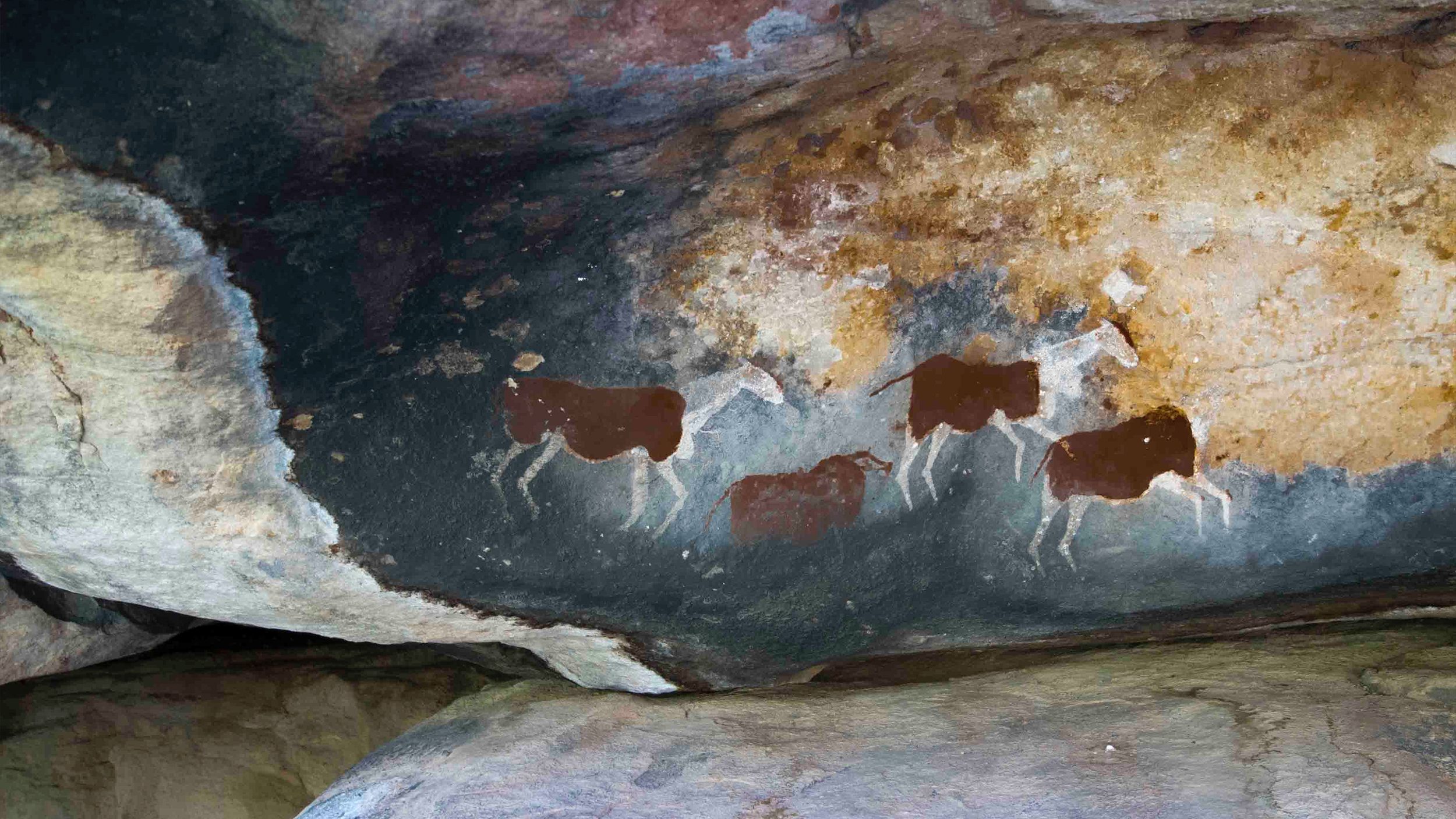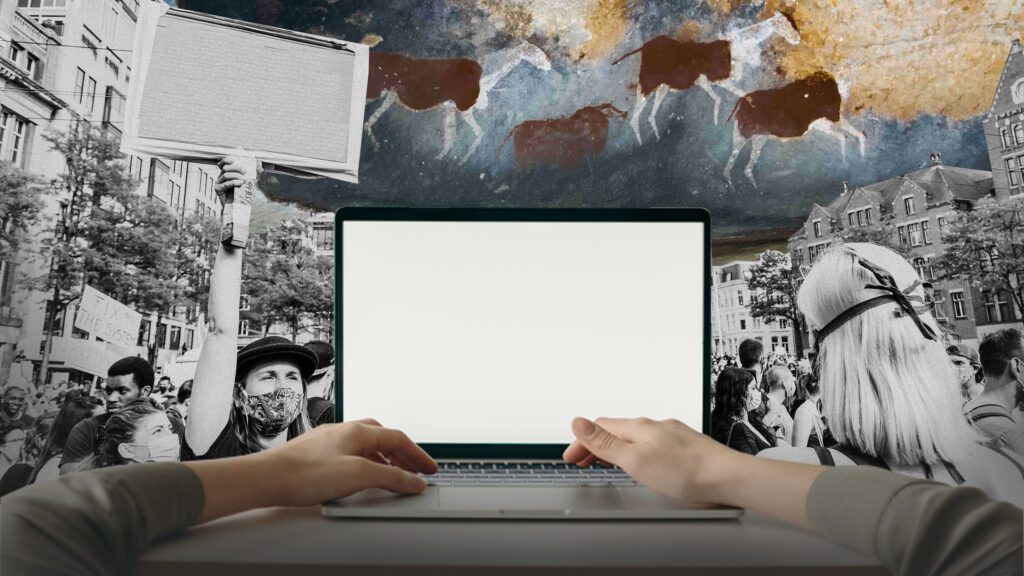On the mind of Huda Chbeir: When we think about activism we think about chants, protests, megaphones, smoke, streets, screams, and strikes. Rarely, however, do we think about the words, the narratives and the stories that might’ve led to that same revolution.
Undermining storytelling has been a predominant act throughout history, despite its huge influence on activism and the supreme role it played in shaping our lives today. Some even disagree with placing it under the same title of activism. I, on the other hand, can go as far as to say that storytelling had made ancient cavemen activists; here’s why.
A Trip Throughout History
Before the existence of language, the very first form of storytelling was practised when cavemen used to paint on the walls of their caves. Making the earliest paintings, estimated to be 40,000 years ago, to be those of animals and haunting scenes.
But why would people, whose main aim was to hunt and survive, draw on the walls?
Several theories have strung up. One of the first ones was when anthropologists suggested that these paintings were in the pursuit of luring animals of the same species. Only to, later on, discover that those animals painted are not the same ones they used to haunt or eat.
The next theory stated that those people could foresee visits by others just like them in the future. Therefore, these paintings are now thought of as information for future generations; with stories about their current lives and the animals they might encounter in that area… To put it briefly: a simple act of activism.
By definition, activism is: “the activity of working to achieve political or social change”. When cavemen drew these paintings, their purpose was to transfer knowledge from generation to generation. By telling their story, not only have they facilitated and assisted the lives of those succeeding them, but they’ve also influenced centuries of storytelling and innumerable generations of storytellers.
After cave painting, a new form of storytelling was established (ensued by the creation of language): oral storytelling. It was then followed by written storytelling, which arose when people started writing stories on pieces of clay and tree leaves.

Years went by, technology has developed, the pain and injustices faced have been growing and hurting, and the great and cursed world of the international web has been established. That brings us to a new form of storytelling; digital storytelling (digital activism); Or what the kids call it these days: social media.
With the rise of social media, people, activists, and different organizations have been using their platforms to share information, educate, spread awareness, and help others. One of the most influential organizations today in Lebanon is Truth Be Told.
Who Are Truth Be Told?
Truth Be Told is a Non-Governmental Organization that focuses on transitional justice and human rights. One of the most dominant tools it uses to facilitate that is… you guessed it: Storytelling. Truth Be Told is mainly based in Lebanon, but it also carries stories and issues from all over the world.
"Honestly every country in the world has injustices and human right abuses, even if they're the most developed countries." Says Yara Sayegh (Founder and CEO of Truth be Told).
Initially, Truth Be Told started as a result of Yara’s master’s degree, when she realized that justice failed in Lebanon.
"In my thesis I created an unofficial model which is not related to the legal system. So, pretty much, you get to hold people accountable by keeping the memory of the past, the human right abuses, the government negligence, the wars, etc... and giving a space for people to tell their testimonial...", she said.
When people hear someone’s story, the memory is kept alive, and that is a form of justice.
Truth Be Told is currently composed of 4 parts:
1) Testimonials:
Where people tell their stories of any human rights abuse, any crisis, any war, or anything that they experienced in conflict and post-conflict communities.
"In any communities around the world where people feel that there's injustices, anyone can talk about it", says Yara.
2) Op-Eds
Where they give young and emerging analysts the chance to publish their work;
"because we realize how difficult it is to be published in New York Times, BBC, CNN... so we thought why not provide a platform for people to be able to publish their work".
That also stemmed from Yara’s struggle to publish her work in her earlier graduate years as well as during her masters.
"Even in my masters, it still was not enough", she says.
3) Human Rights Initiative
Where they’re spreading medications and food boxes all over Lebanon; without any religious, political, or sectarian discrimination. They also have the youth initiative: “The Excellence Football Club” is a football club they started for the orphanage kids of “Deri El Awlad” in Mansoureye.
4) Workshops and Training
This is their newest initiative, yet; where they’re providing people with the tools to be successful in whatever they’re doing and whatever field they’re in.
"That's all what we're doing for now", says Yara, "Hopefully bigger and better things are to come in the future."
With all the compelling initiatives Truth Be Told have been instigating, when asked about their ultimate goal, storytelling patently prevailed- as Yara stated: “To have branches of truth be told all over the world so we can give a chance to people all over the world to tell other stories, to tell their experiences of the human rights abuse, to tell the truth of what they experienced… this is our end goal”.
She then added “Storytelling definitely helps change the world because it keeps the memory of the past alive, which- you cannot erase the past. Because if you erase it, you don’t learn from it. And this is the problem in Lebanon. They wanted to have one common history, and we can never have one common history. So, we need the story of every single side, even if we don’t agree with every single side. It’s important to hear how the other person perceived it.”
By allowing people to share their stories on their platform, Truth be Told have initiated an emotional encounter, where two people who fought against each other in opposite groups during the war, shared their stories with each other. As they did, each of them became incredibly empathetic towards the other party. “When you hear the other person’s side of the story, it brings people together and it helps you understand why they did what they did. It’s also important because when you tell a lot of stories you start hearing common factors like who started this, who lead this, who encouraged this, etc… Then you can start holding people accountable or instigating things.”
"Nobody heard my story, thank you guys for documenting it or else nobody would've heard it", says Camil Zeidan. Now passed away, Camil was a Lebanese citizen who shared his story during the Lebanese Civil War, with Truth be Told- click here to hear his story.
Camil Zeidan is a painful success story, Truth be Told have shared on their platform. Not only did his story educate, inform, and help in activating political and social change, but it also eased his sorrow. By telling his truth, Camil has allowed listeners to help him carry the pain he’s been holding onto, alone, for years. He has ended the pattern of anger and hurt that’s being passed onto every new generation. Camil has shared his story with the world; hoping that his truth can lead us to a better, brighter future.
When I first started writing this article, I was telling my friends and family about Truth be Told. Every time I tried to explain the storytelling aspect of this NGO, I’ve been met with the same sentence: “So that’s it… they just share stories? Do they actually help anyone?”… Completely unaware of the historical and viable role it played in shaping our lives today, of all the lives it had changed, and all those it has saved.
